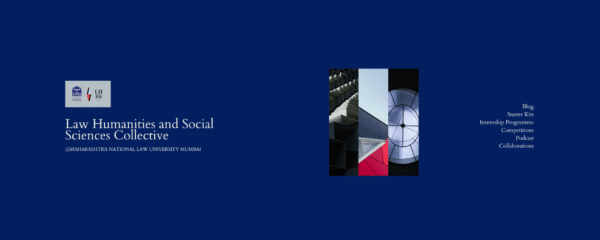Event
Essay Writing Competition
The LHSS Collective, in collaboration with the Literary and Debating Society of MNLU Mumbai, concluded the 1st National Essay writing competition 2024. The competition was a resounding success, with several quality submissions received. The theme of the competition was “Fiction’s Reality: Literary Engagements with Life”. Below are the top 5 Essays in the competition.
The Imaginations Of Science Fiction As Moulding Legal Thought: A Contextual Analysis
Abstract The present paper is an attempt to explore and do some justice to the impact of science fiction upon the development of law and
Analyzing The Caste System In India From The Lens Of Dystopian Novels
ABSTRACT The Caste System in India has been often analyzed for a sociological understanding of its consequences on social institutions. However, as one tries to
The Courtroom of Dreams: How Kafka’s “The Trial” Reshapes Our Understanding of Due Process
Abstract Franz Kafka’s “The Trial” serves as a profound exploration of due process and its psychological impact on the individual. This essay examines how Kafka’s
Law, Ethics, And The Literary Imagination: Deconstructing Fictional Narratives
Abstract This essay explores the intricate interplay between law, ethics, and the literary imagination, urging a re-examination of the boundaries that traditionally separate these fields.
Religious Doctrine And Legal Narrative: Exploring Islamic Law And Lgbtq+ Rights And Their Literacy Reflections
ABSTRACT This essay considers the overlap between Islamic perspectives on LGBTQ+ issues and the moral quandaries depicted in legal literary fiction. Concerning the beautiful narratives
Archive
Policy drafting –
The LHSS (Law, Humanities & Social Sciences) Collective is coming out with its first edition of Policy Drafting Competition. As unscrupulous digital data collection poses a threat to our privacy and erodes trust in an ever intrusive digital healthcare system, a policy addressing digital healthcare privacy becomes critical. One that safeguards personal data, ensures informed consent, mandates robust security measures, and upholds legal compliance, all of which are essential for ethical and secure digital healthcare practices.
This competition offers a valuable opportunity for individuals to learn the nuances of policy drafting and hone their skills in that respect. Participants will gain insights into the entire drafting process, from identifying issues to striking a balance between idealism and pragmatism. Policy drafting enhances the capacity to observe current legal issues, propose solutions, and broaden their knowledge, analytical skills, and interpretation of the law. This event aims to provide a platform to tackle the pressing concern of privacy in the current digital healthcare framework. The competition seeks innovative policy solutions to address existing issues and aims to instil the importance and understanding of policy drafting among them. It encourages critical and creative thinking and inspires participants to develop innovative policies and contribute to overcoming challenges.
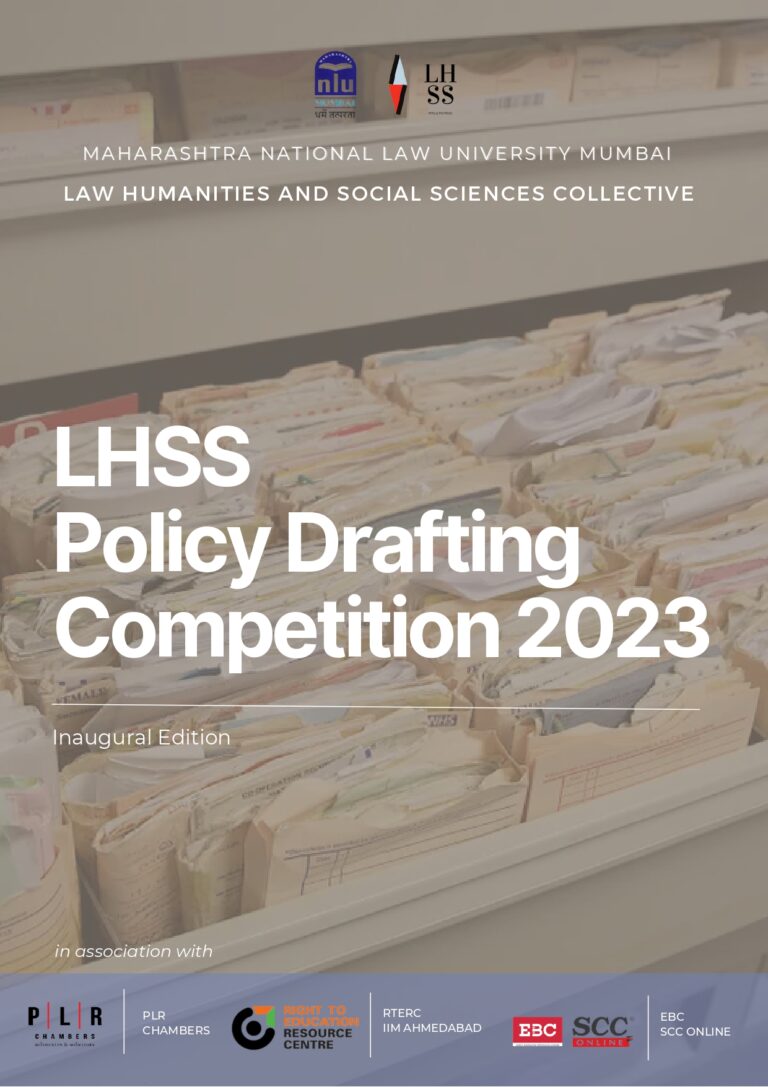
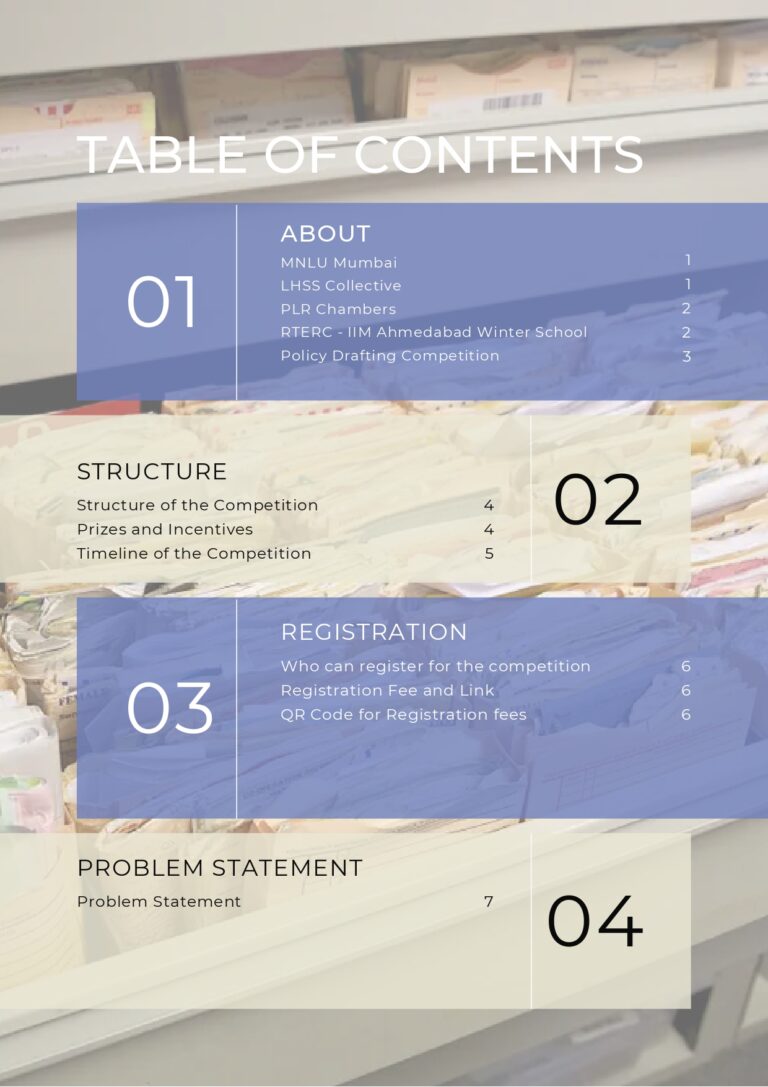
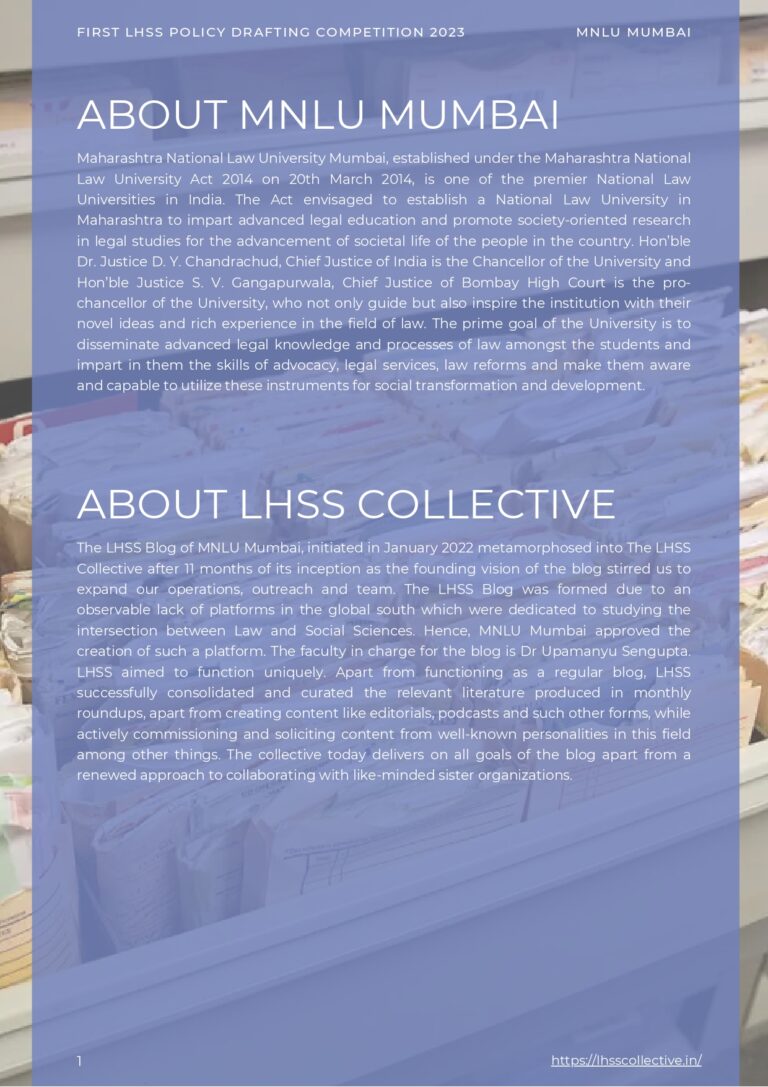

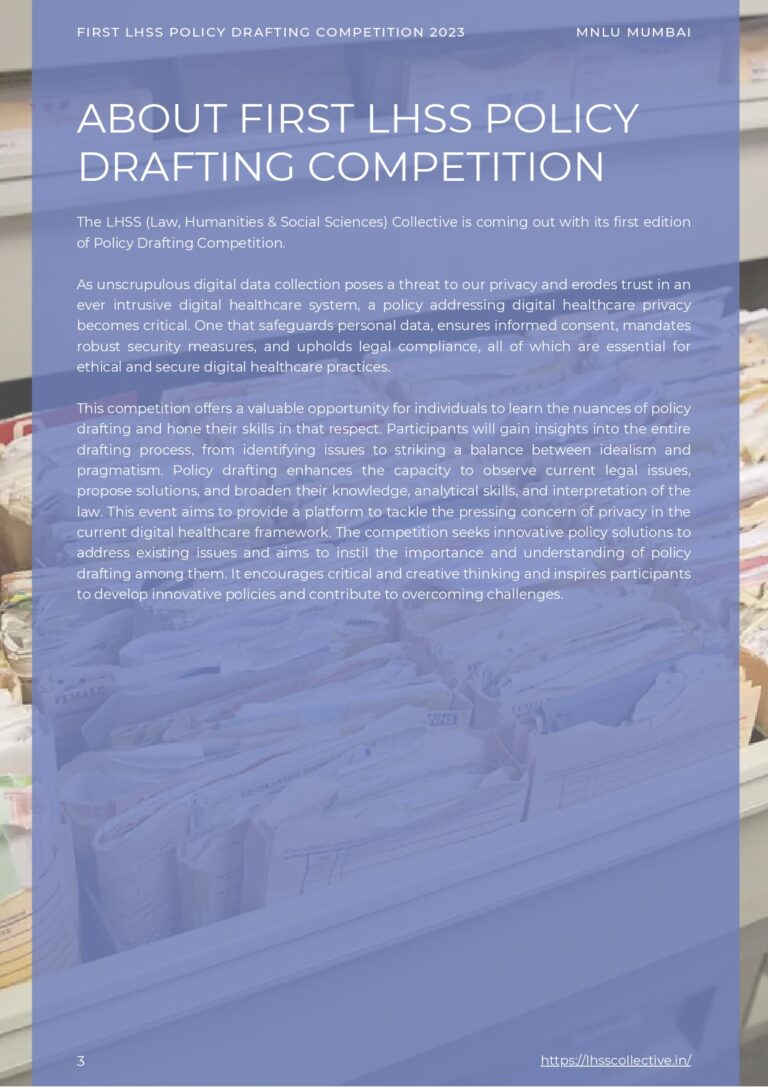

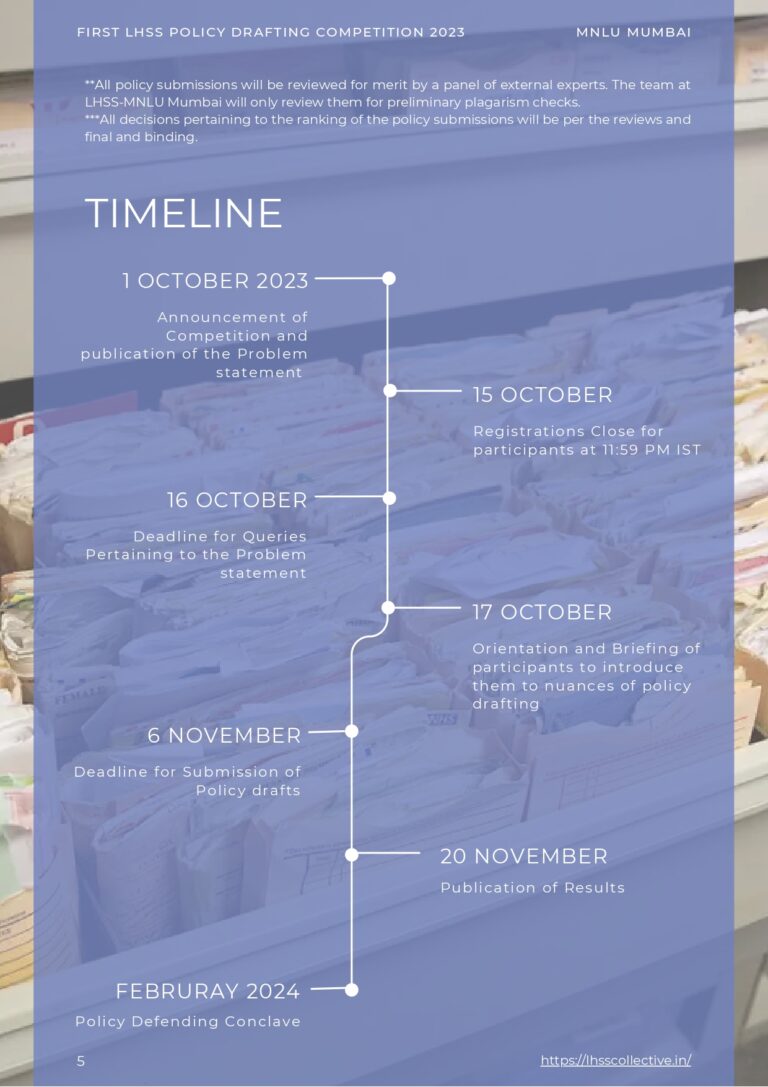

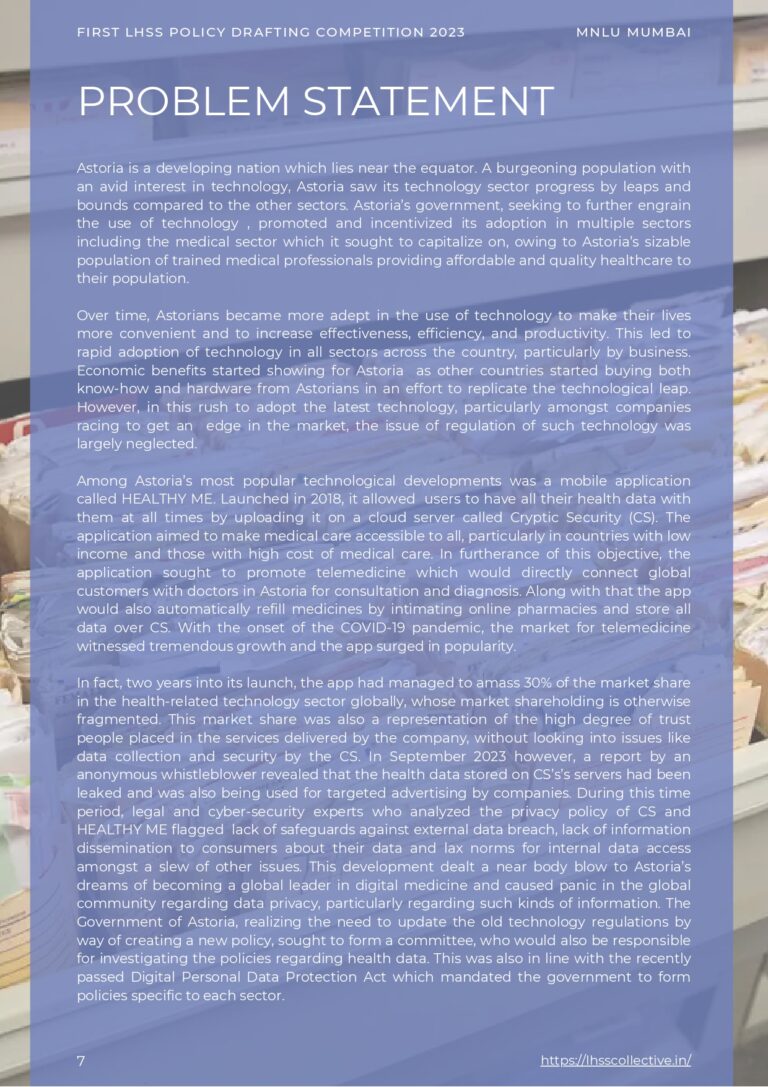
Symposium 2024 –
The LHSS International Symposium is a two-day virtual event that brings together scholars, students, and legal professionals to explore the dynamic interplay between law and social sciences. Building on the success of the first edition, this edition of the competition, being held on 11 – 12 May 2024, aims to foster a deeper understanding of crises faced by law. Over the period of two days, this symposium would feature some of the prominent voices in the field.
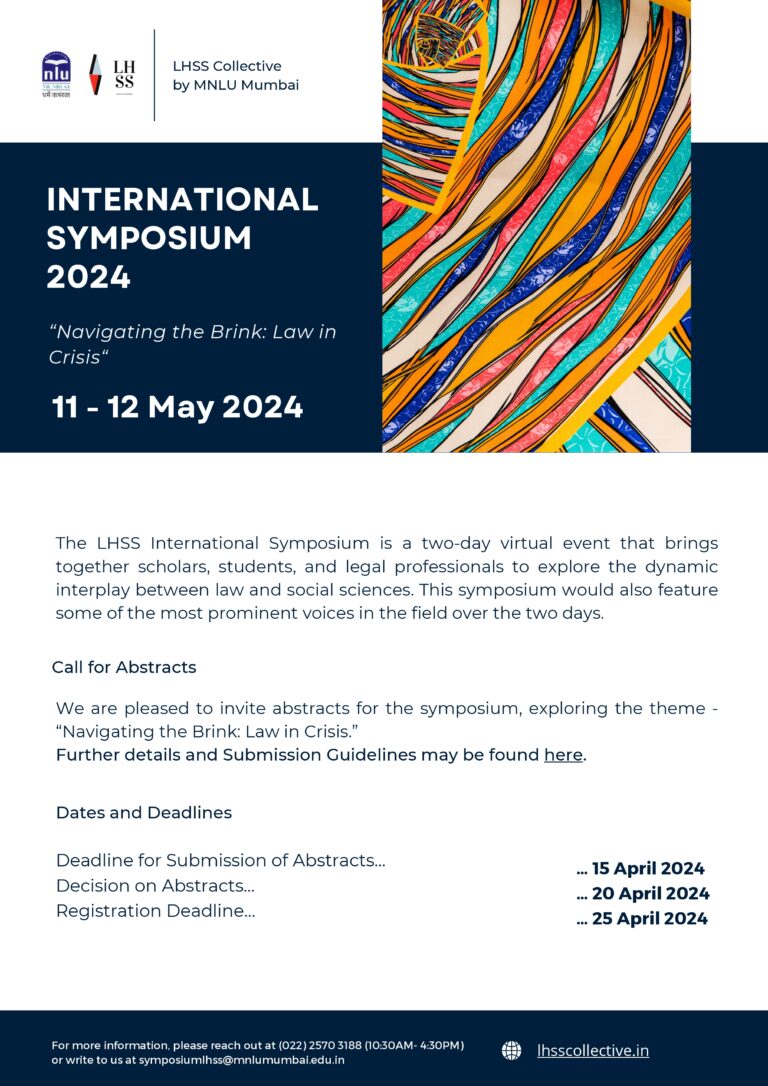
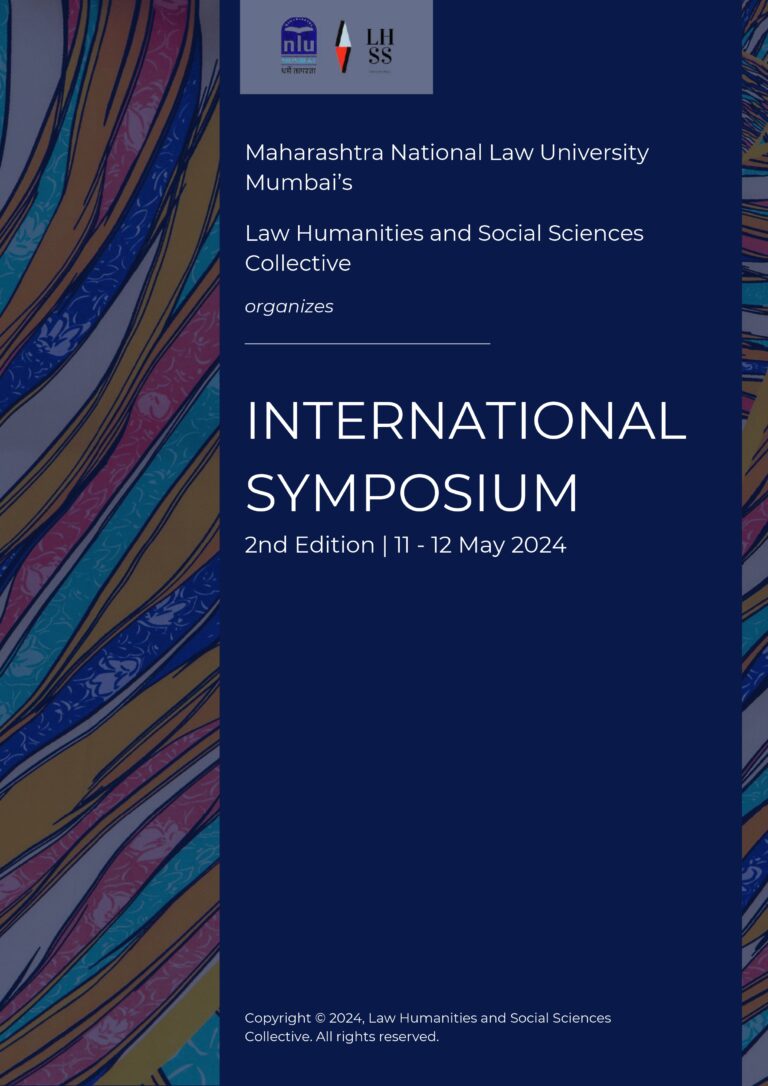
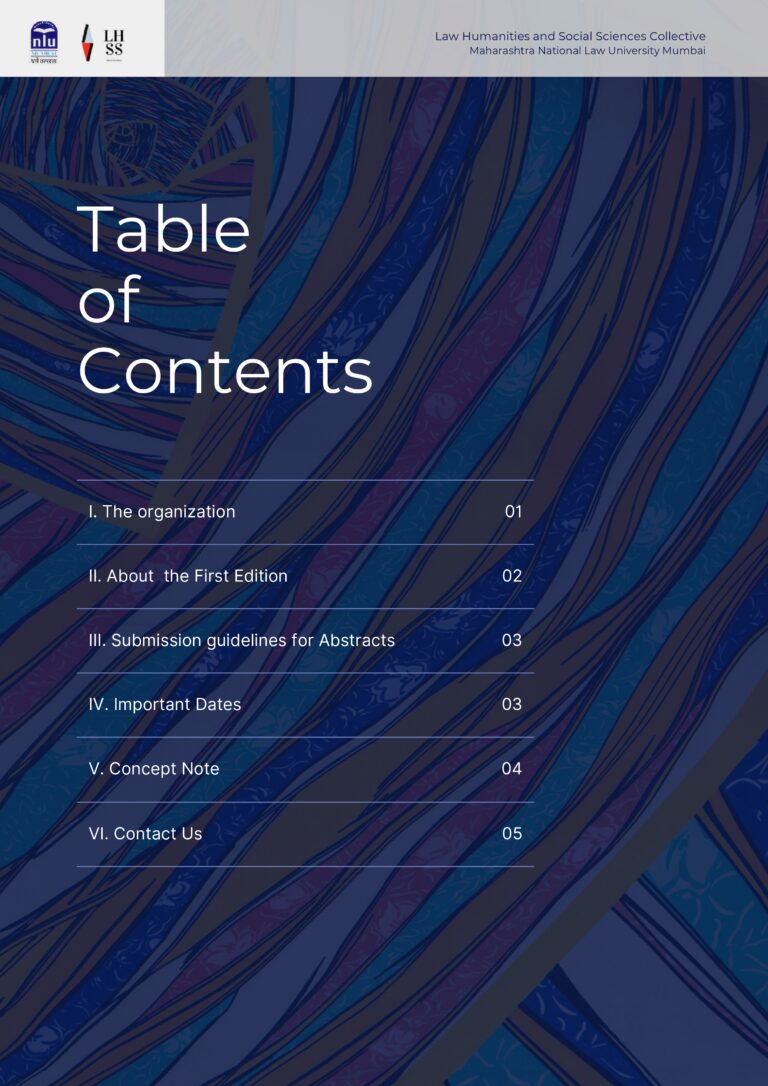
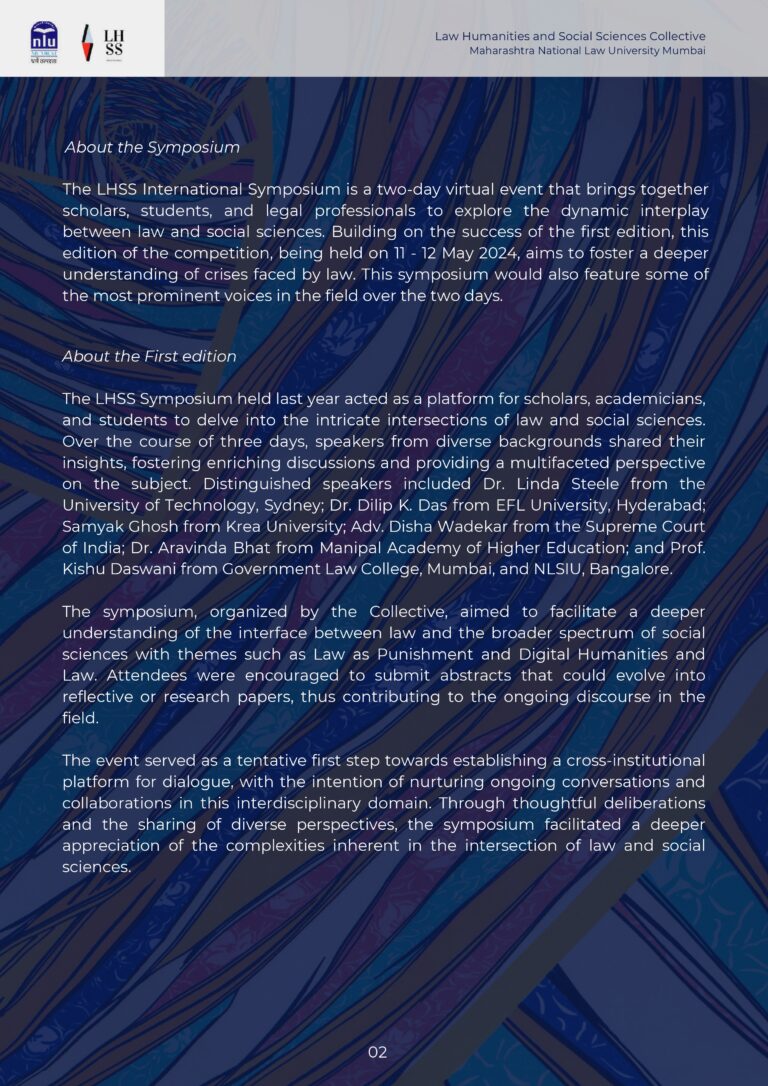
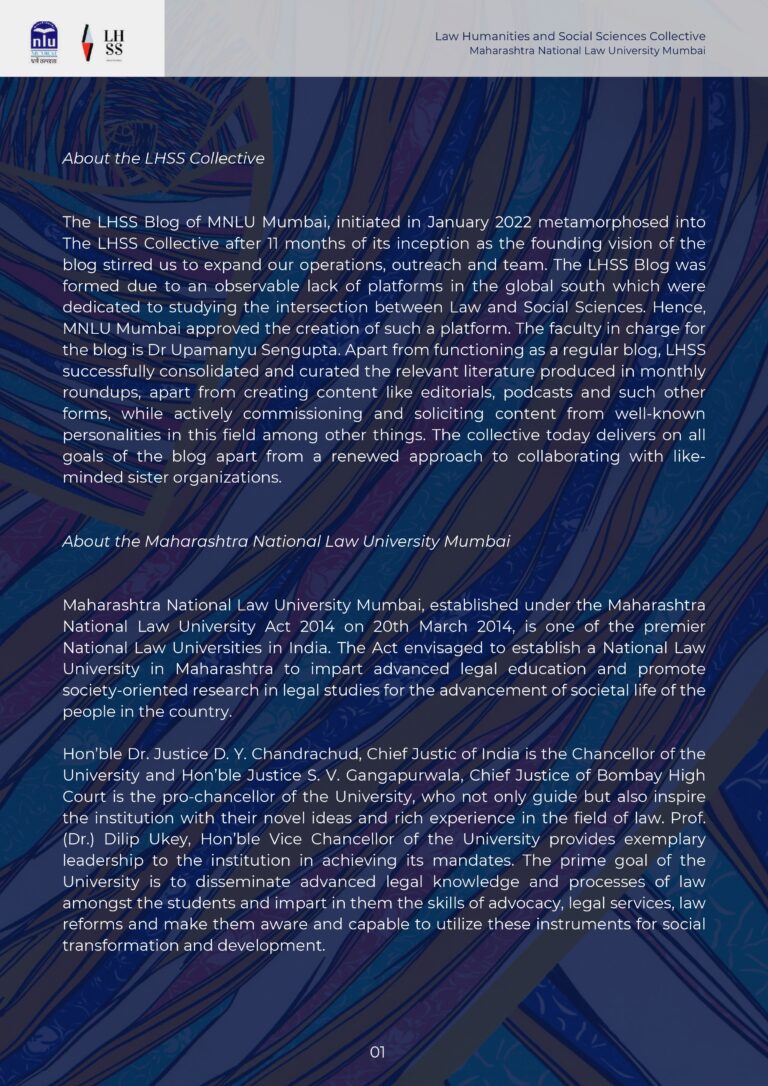
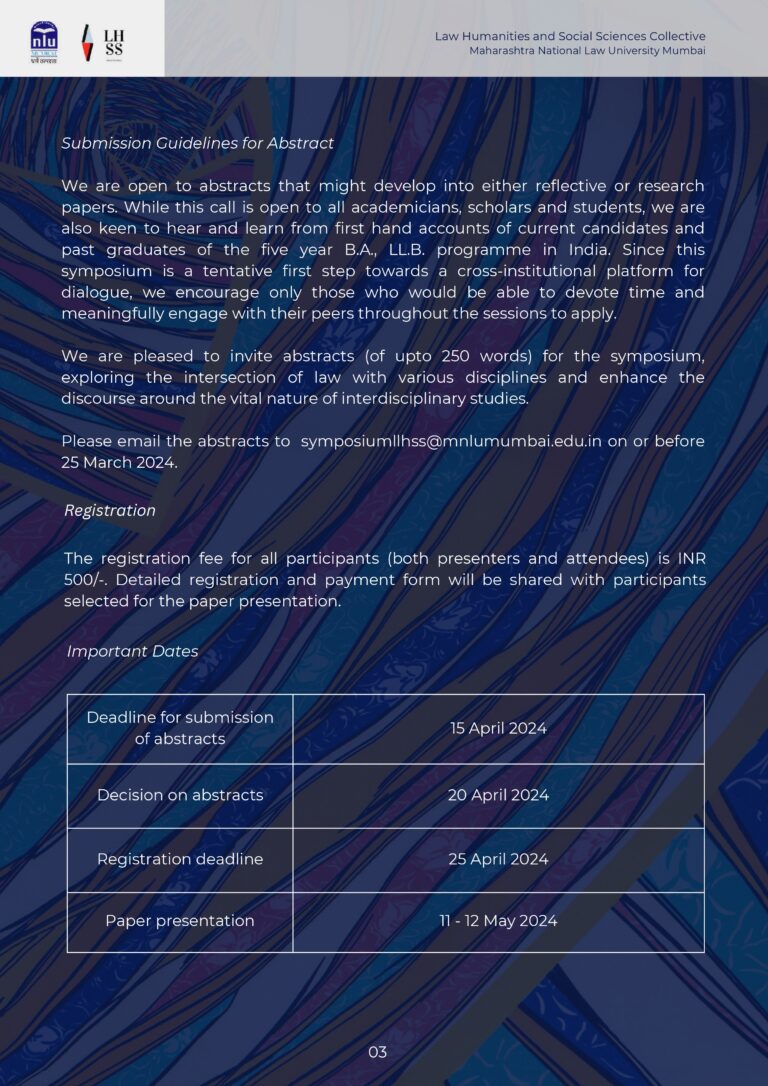
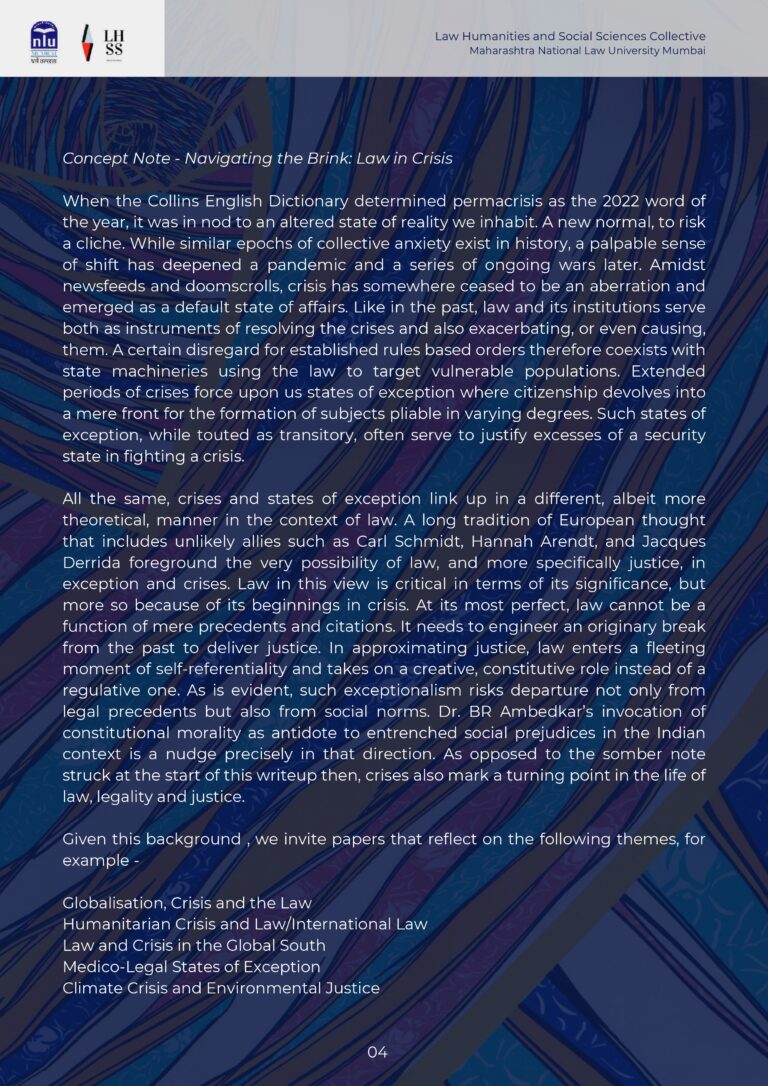
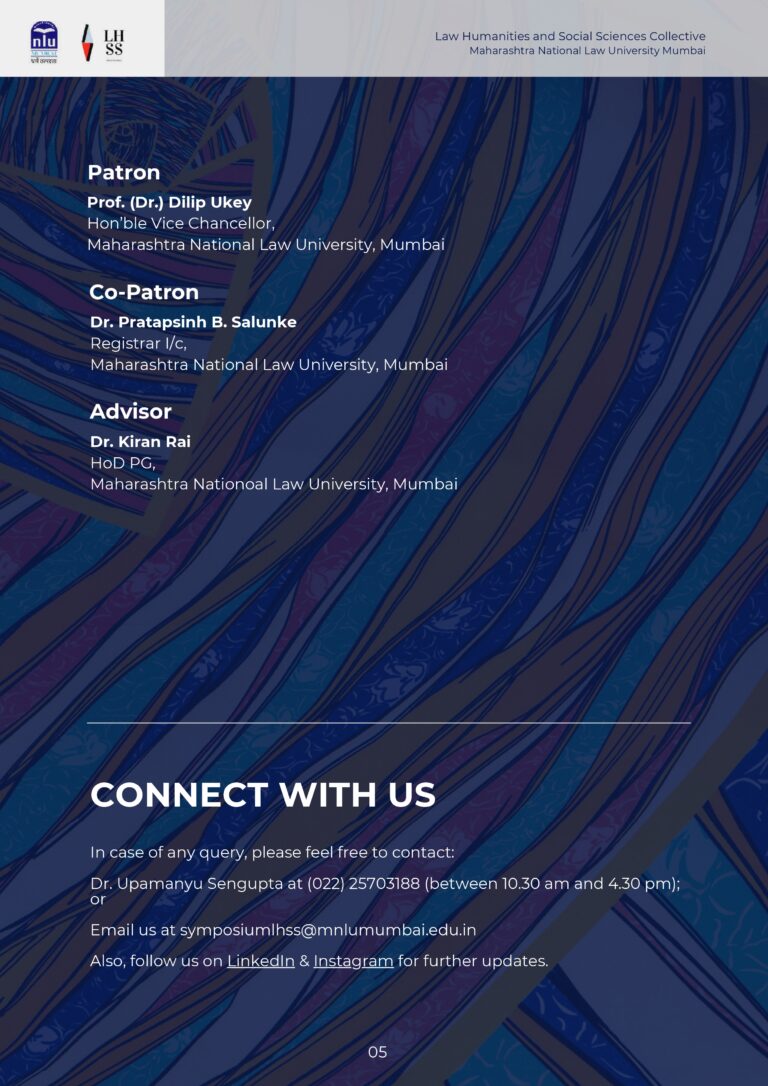
Symposium 2023 –
After three days of invigorating discourse (12 May -14 May), the LHSS Collective’s symposium on the intersection of law and humanities and social sciences has drawn to a close, leaving participants inspired and enlightened. From thought-provoking abstracts to engaging discussions, the event provided a platform for scholars and practitioners to delve into the complex interplay between legal frameworks and societal dynamics. Throughout the symposium, attendees were privileged to hear from some of the most eminent voices in the field, whose expertise illuminated new perspectives and avenues for exploration. As the curtains fall on this enlightening gathering, the reverberations of collaborative inquiry and interdisciplinary exchange are sure to resonate far beyond its conclusion, shaping the future discourse at the nexus of law, humanities, and social science.
Eklavya Foundation
The LHSS Eklavya Partnership provides training and mentorship to law entrance aspirants from marignalised communities across India. Dedicated teams of student volunteers from MNLU Mumbai prepare the curriculum and administer them to higher secondary schoolers over eight months of virtual classes. Subjects covered include Legal Reasoning, Logical Aptitude, General Knowledge, English and Mathematics. The programme hopes to play a transformative role in the individual lives of law aspirants, but also benefit their communities. At the same time, it offers a vital socio-cultural exposure for law school students.
The collaboration between LHSS and the Eklavya Foundation represents a significant step towards promoting equal access to legal education. By providing free coaching to aspiring law students from underprivileged backgrounds, we aim to level the playing field and empower deserving individuals to pursue their dreams. Join us in this noble endeavor and let us together make a lasting impact on the lives of those who strive for excellence in the field of law.
If you aspire to pursue a legal career and need guidance to crack the CLAT, we invite you to join our initiative. Our coaching program is open to all individuals from underprivileged backgrounds who demonstrate a genuine passion for law and a commitment to their education. Together, we can overcome barriers and unlock the doors to a brighter future.
Student Volunteer Teachers
- Siddhant Shinde
- Harshita Sharma
- Samruddhi Nanoskar
- Urja Vashishth
- Maitrayee
- Shrushti Wankhade
- Srushti Gawande
- Shubham Jagtap
- Prasanna Bhalerao
- Monika Saini
- Saif Maner
- Gauri Baviskar
- Arnav Sinha
- Siddhi Indoria
- Taher Hussain
- Ekam Khera
- Arnav Sinha
- Shruti Shardul
Student Volunteer Course Designer
Team
- Harshita Sharma
- Nilotpal Singh
- Tania Bagwe
- Shubham Jagtap
- Urja Vashishth
- Sameep Baral
- Dev Jhunjhunwala
- Lavanya Sehgal
- Shreya Khillare
- Saif Firozkhan Maner
- Preeti Zalwar
- Taher Hussain
- Rithika Sahni
